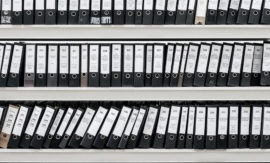Intended learning outcomes: Present the concepts of bill of production equipment and bill-of-production-equipment position as well as production equipment where-used list. Produce an overview on collective tool, bill of tools, bill-of-tools position, and tool where-used list.
The production equipment business object was introduced in Section 1.2.4 together with the work center and routing sheet objects. This section provides a detailed description of the production equipment object, together with some additional logistical objects and their most important attributes.
Production equipment means machines, devices (e.g., jigs, fixtures), and tools. These objects can no longer simply be mentioned in a work instruction. We are now interested in, f.ex.:
- How a certain tool will be used in the operations, for example, in order to plan an alternative for that tool or to determine the load on a tool
- Utilization of a tool, in order to calculate depreciation and to schedule maintenance
The technical information for production equipment is essentially the information that is administered as attributes for the item.
The information concerning depreciation of production equipment uses attributes similar to the cost attributes of the item. Additional specific attributes must also be administered, such as the depreciation rate and planned and effective utilization.
The information concerning the capacity of a tool or device uses attributes similar to those for the work center. Today, however, a tool is no longer necessarily associated with just one machine or work center. Flexible work cells often allow tools to be used flexibly.
The load and capacity of a machine are subsets of the load and capacity of the entire work center to which the machine belongs.
A bill of production equipment for a product is made up of various bill of production equipment positions.
A bill of production equipment position is production equipment that is used in a specific operation.
A production equipment position has about the same attributes as a bill-of-material position.
A production equipment where-used list shows the usage of production equipment within products; more correctly within operations, for manufacturing products.
In analogy to the where-used list of components, the production equipment where-used list is a view of the production equipment on the operations, thus complementing the view of the product. A production equipment is in a 1-to-n association with the operations.
A collective tool or toolkit is the combination of a set of tools.
A bill of tools describes the individual tools that make up a toolkit.
Collective tools are particularly important in machining centers, for example. The structure of a bill of tools is similar to that of a bill of material with its bill-of-material positions (see Section 17.2.3).
A tool where-used list shows the usage of a tool within collective tools.
Bills of tools and tool where-used lists can be compared to bills of material and where-used lists of items. The possible variants of such bills and lists (single-level, multilevel, etc.) correspond to those in Section 17.2.3.
Course section 17.2: Subsections and their intended learning outcomes

17.2 The Master Data for Products and Processes
Intended learning outcomes: Describe master data of products, components, and operations. Explain the data structure of item master, bill of material, and where-used list. Disclose the data structure of work center master data, the work center hierarchy, as well as for operation, routing sheet, production equipment, bill of production equipment, and bill of tools.

17.2.1 Product, Product Structure, Components, and Operations
Intended learning outcomes: Present the concept of master data. Explain the production order as a collection of master data. Describe a simple product structure.

17.2.1b The Intermediate Part
Intended learning outcomes: Identify the intermediate part used simultaneously as a component in higher-level products.

17.2.2 Item Master Data
Intended learning outcomes: Present the concept of the item master record. Describe the attributes of the technical information and the stockkeeping information of the item master record. Identify attributes of the item master record for information on costs and prices.

17.2.3a Bill of Material, Bill-of-Material Position, and Where-Used List
Intended learning outcomes: Present the concepts of the bill of material, of the bill-of-material position, and the where-used list.

17.2.3b Single-Level Bill of Material, Multilevel Bill of Material, and Summarized Bill of Material
Intended learning outcomes: Differentiate between the single-level bill of material, the multilevel bill of material, and the summarized bill of material.

17.2.3c Single-Level Where-Used List, Multilevel Where-Used List, and Summarized Where-Used List
Intended learning outcomes: Differentiate between the single-level where-used list, the multilevel where-used list, and the summarized where-used list.

17.2.3d The Bill-of-Material Position and the Where-Used-List Position as a Logistical Object
Describe the bill-of-material position and the where-used-list position as logistical objects. Identify its most important attributes.

17.2.4 Work Center Master Data
Intended learning outcomes: Present the work-center business object. Describe the attributes of the work-center master record relating to capacity, concerning costs, and for calculating the lead time.

17.2.5 The Work Center Hierarchy
Intended learning outcomes: Present the concepts of workstation and cost center. Explain the work center hierarchy.

17.2.6 Operation and Routing Sheet
Intended learning outcomes: Present the operation business object in association with the routing sheet. Describe its attributes. Identify the work center where-used list.

17.2.7 Production Equipment, Bill of Production Equipment, and Bill of Tools
Intended learning outcomes: Present the concepts of bill of production equipment and bill-of-production-equipment position as well as production equipment where-used list. Produce an overview on collective tool, bill of tools, bill-of-tools position, and tool where-used list.
